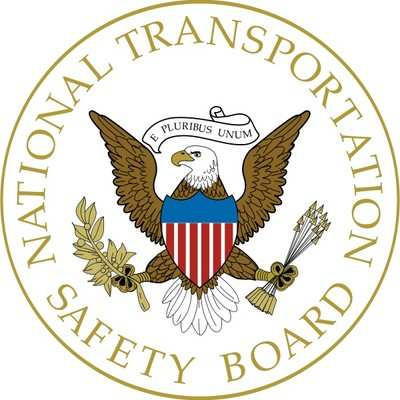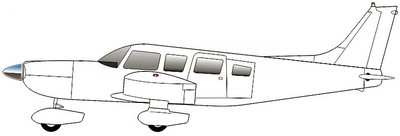The Airplane Was Flying Approximately Parallel To And South Of A Band Of Light/Moderate To Extreme Precipitation
Location: Metz, WV Accident Number: ERA22FA368
Date & Time: August 11, 2022, 18:05 Local Registration: N720RP
Aircraft: Piper PA32 Injuries: 3 Fatal
Flight Conducted Under: Part 91: General aviation - Personal

On August 11, 2022, about 1805 eastern daylight time, a Piper PA32, N720RP, was destroyed when it was involved in an accident near Metz, West Virginia. The private pilot and two passengers were fatally injured. The airplane was operated as a Title 14 Code of Federal Regulations Part 91 personal flight.
According to the pilot’s employer, the pilot and the passengers were congregants of the same church, and the flight was a planned day trip to conduct church business in Indiana. The accident occurred on the return flight. Preliminary Automatic Dependent Surveillance - Broadcast (ADS-B) data revealed that the airplane departed Deck Airport (9D4), Myerstown, Pennsylvania, about 0735 and landed at Daviess County Airport (DCY), Washington, Indiana. The airplane subsequently departed DCY at 1543. The data showed the airplane in a cruise profile on an approximate 070° track about 9,500 ft mean sea level (msl). Weather radar imagery superimposed over the airplane’s flight track indicated that the airplane was flying approximately parallel to and south of a band of light/moderate to extreme precipitation that extended across Ohio, West Virginia, and Pennsylvania. Preliminary air traffic control communication information revealed that, at 1752:06, the pilot contacted the Cleveland Air Route
Traffic Control Center controller and stated, “I’m looking at my NEXRAD here and I’m thinking about doing like 30 degrees left right now to get over the top side of this stuff, what does it look [like] at your end?” The controller replied, “I’m showing some slight gaps in that, but the whole line off your left-hand side is moderate to heavy with pockets of extreme. So, there may be some slight gaps. I’m just not real sure if they are in fact gaps from your point of view. But whatever you think looks good. Just let me know if you need anything.” The pilot replied, “I appreciate the help.”
At 1801:09, the pilot announced to the controller, “We’re going to deviate about 20 [degrees] left and see if we can [unintelligible] of this thing.” The controller responded, “Roger. I’m showing the more extreme heavy precipitation just off your left wing there and with the small gap at your 12 o’clock and 5 miles.” At 1801:31, the pilot replied, “Yep, that’s what we’re looking for.” There were no further communications from the airplane. At the time of the airplane’s final transmission, the ground track had changed to about 050°, and the airplane had entered an area of light precipitation. The airplane continued the same track about 9,500 ft msl, and over the next 6 miles, transitioned through light, moderate, heavy, and into an area of extreme precipitation. About 1803, the track data depicted a steep, descending, right turn that continued until data was lost.
The pilot held a private pilot certificate with a rating for airplane single-engine land. He did not possess an instrument rating. The pilot completed the requirements for operation under BasicMed on May 11, 2021. Examination of the pilot’s logbook revealed that the pilot began flying in 2005, and had accrued 387 total hours of flight experience, of which 232 hours were in the accident airplane make and model.

According to Federal Aviation Administration (FAA) records, the airplane was manufactured in 1980 and was powered by a Lycoming IO-540-K1G5 300-horsepower engine. According to the pilot’s employer, the airplane’s most recent annual inspection was completed August 10, 2022. Local emergency services personnel located the airplane’s fuselage in hilly, wooded terrain about one hour after the accident. The fuselage came to rest inverted with the engine and propeller still attached. The fuselage was crushed uniformly on its right side along its entire length. The wings and the tail section, which included the horizontal stabilizer, elevator, vertical stabilizer, and rudder, were separated from the fuselage and located by emergency personnel and search and rescue volunteers over the following days.
The fuselage came to rest in the immediate vicinity of the final flight track data, and the wreckage was distributed generally south of the fuselage over about 0.8 miles. The left wing was about 100 yards to the west of the fuselage, and the right wing was about 400 yards southwest. Both wings were separated at their respective roots. The fracture surfaces displayed at each wing and their corresponding wing root at the fuselage were consistent with overstress fracture. Several pieces of aircraft sheet metal were found along the wreckage path, with pieces associated with the tail section the furthest away.
Flight control continuity was confirmed from the cockpit through several breaks and cuts consistent with recovery operations, to the flight control surfaces recovered in the debris field. An engine data monitor was removed from the instrument panel and retained for further examination.
The right side of the engine was impact damaged. The right rocker box covers (Nos. 1, 3, and 5) were molded around the rocker arms by impact, preventing movement. Once the valve covers were removed, the engine was rotated by hand at the propeller and compression was confirmed on all cylinders using the thumb method. The Nos. 1, 3, and 5 cylinders displayed cracks to the rocker box flange surface or the area between the valves within the cylinder head due to impact. The cooling fins were also damaged on these cylinders. The right magneto was impact separated from the engine accessory case but produced spark at all leads when rotated using an electric drill. The left magneto, which was electronic, could not be tested for spark, but remained securely mounted to the accessory case.
All spark plugs were found installed to their respective cylinders. The plugs were removed and no damage was observed to any of the electrodes. The vacuum pump remained attached to the accessory case. The pump was removed and disassembled; the rotor and vanes were intact, and the pump spun freely. The propeller governor was attached to the engine securely and removed for examination. The screen was present and free and clear of any debris. The governor drive spun freely by hand and oil exited the unit during hand operation. The oil filter was removed, cut open, and inspected. The filter element contained no debris and was unremarkable, the date written on the oil filter was 8/10/22.
The fuel servo was found secure to the engine with both the throttle and mixture cables attached. The servo was removed and disassembled. The inlet screen was free and clear of debris. Both diaphragms were unremarkable. The fuel manifold was securely attached to the top of the engine with no damage noted. The diaphragm was unremarkable. All 6 injector nozzles were removed and were unobstructed.
 Classic Aero-TV: Pure Aerial Precision - The Snowbirds at AirVenture 2016
Classic Aero-TV: Pure Aerial Precision - The Snowbirds at AirVenture 2016 NTSB Final Report: Costruzioni Aeronautiche Tecna P2012 Traveller
NTSB Final Report: Costruzioni Aeronautiche Tecna P2012 Traveller ANN's Daily Aero-Linx (11.23.25)
ANN's Daily Aero-Linx (11.23.25) ANN's Daily Aero-Term (11.23.25): Request Full Route Clearance
ANN's Daily Aero-Term (11.23.25): Request Full Route Clearance Aero-News: Quote of the Day (11.23.25)
Aero-News: Quote of the Day (11.23.25)




